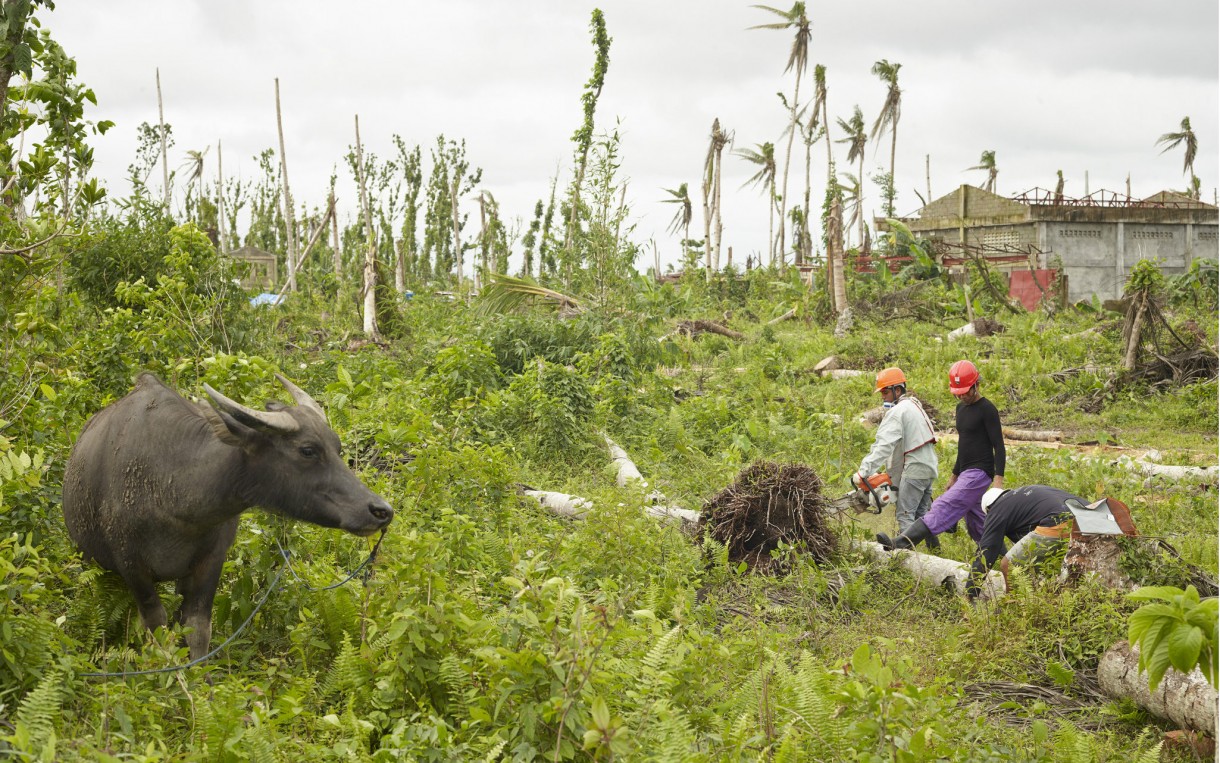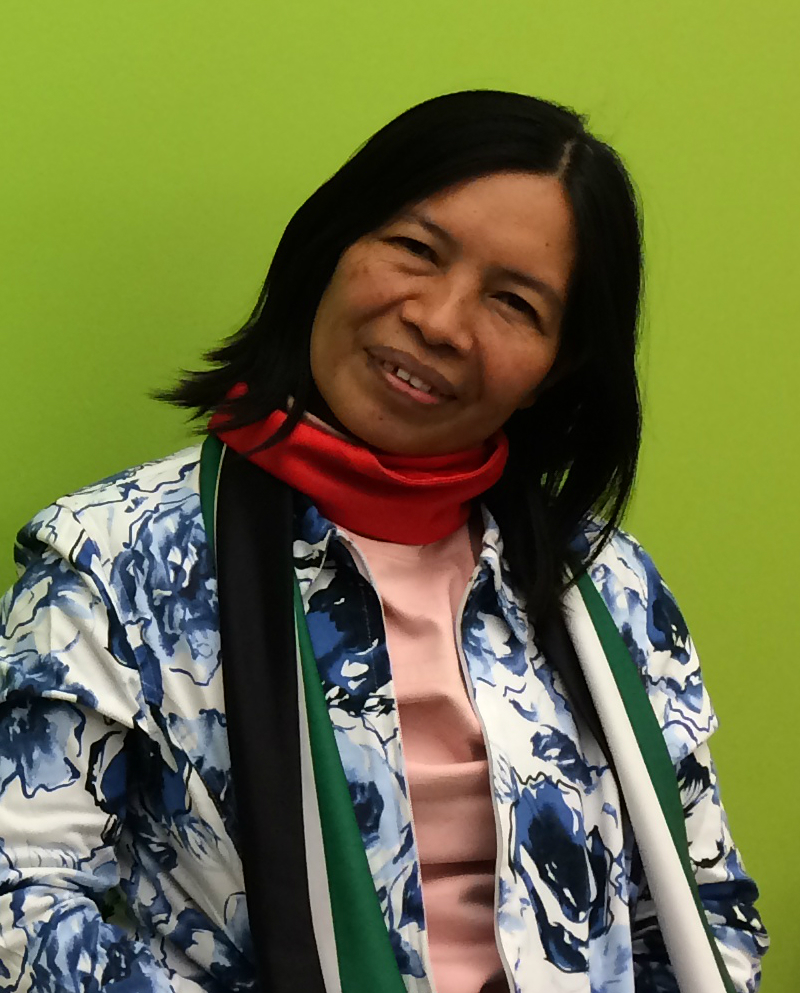Who is there when the typhoon hits? Local organizations and disaster response following Yolanda (Haiyan) Part 2
 A water buffalo stands beside members of the Cabuynan Farmers Association in Tanauan, Leyte who lost their trees and their livelihoods during Typhoon Haiyan. The Association’s Project Manager, Crispin Miranda, said, “Let us work, let us help each other in order to succeed.” Photo: Simon Roberts / Oxfam
A water buffalo stands beside members of the Cabuynan Farmers Association in Tanauan, Leyte who lost their trees and their livelihoods during Typhoon Haiyan. The Association’s Project Manager, Crispin Miranda, said, “Let us work, let us help each other in order to succeed.” Photo: Simon Roberts / Oxfam
Part II of an interview with Josefa Roces-Pizon, Executive Director of the Rural Development Institute-Leyte in the Philippines.

The value in empowering organizations like Rural Development Institute-Leyte (RDI-Leyte) following a disaster like Typhoon Yolanda (Haiyan) isn’t just about ensuring a timely response, it’s also about finding more locally-driven, sustainable solutions to problems that plagued communities prior to any disaster and will continue to plague them long after. Unfortunately, says Roces-Pizon, the international attention and the humanitarian community’s relief interventions can cause more chaos locally.
“The media focuses on where people die, not necessarily where people are affected,” says Roces-Pizon, “and when the international groups come in, most suppliers [of transport, fuel, lumber, or materials] want to work only with them because they can pay higher prices. This really disrupts the local economy.”
Mike Delaney, Oxfam America’s Director of Humanitarian Response says, “We want our [local] partners to play a greater part in recognition of their important roles. We want to support them to demand their rights for safety and security.”
For example, following the Port-au-Prince earthquake, the U.N. Special Envoy for Haiti reported that only about 1% of international aid went to national institutions, including the Haitian government and Haitian non-profits and grassroots organizations.
“Who are the true humanitarian groups, really serving the people?” Roces-Pizon asks. “Those with air-conditioned vehicles with logos, using up all the fuel?”
Marginalized from disaster response, the frustration of local organizations often grows, as international actors ask them to survive on project funds that don’t sufficiently support salaries or administrative costs, and that carry many and often changing funding restrictions. This under-capitalization of national and local institutions thwarts their effectiveness in the wake of the early response and long-term recovery following a disaster.
“Who will care for the carers?” asks Roces-Pizon. “RDI-Leyte’s early recovery project [in partnership with a UK-based NGO] only lasts until April. We might not be able to sustain, but we want to do this because we have the interest and the heart and the aggressiveness to support the community in their time of need.”
For Roces-Pizon, this is part of who she is.
“I started this work when I was ten years old,” says Josefa. “I’ve always been involved in community activities.” The daughter of a farmer and fisherman, she became involved in the “people power” movement after attending university.
“I am proud that with our limited funds, we have still managed to sustain initiatives at the ground level. People are really genuine in their advocacy, but people really struggle with funding. We have a sense of responsibility to take care of people.”
Roces-Pizon urged international actors in Washington DC to consider that the biggest humanitarian contribution they can make is to build the capacity of local groups before disaster strikes. She also says that when people are involved this way prior to a disaster, they have a sense of ownership that leads to more accountability.
Oxfam’s Scott Paul explains. “Local organizations are typically strongly committed and well-placed to respond to disasters in their communities. Of course the international community and donors add value, but also can add problems and undue burdens on local organizations. That’s why Oxfam wants the US government to invest in local organizations throughout the disaster cycle. Let’s find a way to reduce the need for giant, costly, international humanitarian responses.”
“We may not have all the capacity,” says Roces-Pizon, “but all the demand is coming to us. And we want to be able to do this work very well.”
“We are the real early responders, and our families and communities are affected too. We have to be able to recover and rehabilitate in our own way.”